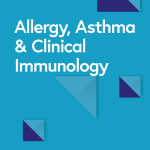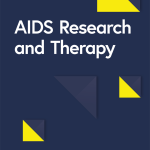Watson V, Tudur Smith C, Bonnett L. Protocol for a systematic review of prognostic models for recurrent events in chronic conditions. Diagn Progn Res. 2020;4(1):1.
Ensor J, Riley RD, Moore D, Snell KIE, Bayliss S, Fitzmaurice D. Systematic review of prognostic models for recurrent venous thromboembolism (VTE) post-treatment of first unprovoked VTE. BMJ Open. 2016;6(5):e011190.
Debray TPA, Damen JAAG, Snell KIE, Ensor J, Hooft L, Reitsma JB, et al. A guide to systematic review and meta-analysis of prediction model performance. Bmj. 2017;356:i6460.
Agnihothri S, Cui L, Delasay M, Rajan B. The value of mHealth for managing chronic conditions. Health Care Manag Sci. 2020;23(2):185–202.
Riley RD, DvdW, Croft P, Moons KG. Prognosis research in healthcare: concepts, methods, and impact Oxford 2019. Oxford: Oxford University Press; 2019.
Steyerberg E. Applications of prediction models. New York, NY: Springer; 2009.
Ozga A-K, Kieser M, Rauch G. A systematic comparison of recurrent event models for application to composite endpoints. BMC Med Res Methodol. 2018;18(1):2.
Geersing GJ, Bouwmeester W, Zuithoff P, Spijker R, Leeflang M, Moons KG. Search filters for finding prognostic and diagnostic prediction studies in Medline to enhance systematic reviews. Plos One. 2012;7(2):e32844.
Wolff RF, Moons KGM, Riley RD, Whiting PF, Westwood M, Collins GS, et al. PROBAST: a tool to assess the risk of bias and applicability of prediction model studies. Ann Intern Med. 2019;170(1):51.
Genser B, Wernecke KD. Joint modelling of repeated transitions in follow-up data—a case study on breast cancer data. Biom J. 2005;47(3):388–401.
Gohari MR, Khodabakhshi R, Shahidi J. The impact of multiple recurrences in disease-free survival of breast cancer: an extended Cox model. Biblioteca Istituto Tumori. 2012;98:428–33.
Gohari MR, Mahmoudi M, Mohammed K, Pasha E, Khodabakhshi R. Recurrence in breast cancer. Analysis with frailty model. Saudi Med J. 2006;27(8):1187–93.
Mauguen A, Rachet B, Mathoulin-PÈlissier S, MacGrogan G, Laurent A, Rondeau V. Dynamic prediction of risk of death using history of cancer recurrences in joint frailty models. Stat Med. 2013;32(30):5366–80.
Mazroui Y, Mauguen A, Mathoulin-PÈlissier S, MacGrogan G, Brouste V, Rondeau V. Time-varying coefficients in a multivariate frailty model: application to breast cancer recurrences of several types and death. Lifetime Data Anal. 2015;22(2):191–215.
Putter H, van der Hage J, de Bock GH, Elgalta R, van de Velde CJH. Estimation and prediction in a multi-state model for breast cancer. Biom J. 2006;48(3):366–80.
Lujan S, SantamarÌa C, Pontones JL, et al. Risk estimation of multiple recurrence and progression of non-muscle invasive bladder carcinoma using new mathematical models. Actas Urol Esp. 2014;38(10):647–54 Elsevier.
Smedinga H, Steyerberg EW, Beukers W, van Klaveren D, Zwarthoff EC, Vergouwe Y. Prediction of multiple recurrent events: a comparison of extended Cox models in bladder cancer. Am J Epidemiol. 2017;186(5):612–23.
Yan Y, Andriole GL, Humphrey PA, Kibel AS. Patterns of multiple recurrences of superficial (Ta/T1) transitional cell carcinoma of bladder and effects of clinicopathologic and biochemical factors. Cancer. 2002;95(6):1239–46.
Yonekura S, Terauchi F, Hoshi K, Yamaguchi T, Kawai S. Androgen receptor predicts first and multiple recurrences in non-muscle invasive urothelial carcinoma of the bladder. Pathol Oncol Res. 2018;25(3):987–94.
Charles-Nelson A, Katsahian S, Schramm C. How to analyze and interpret recurrent events data in the presence of a terminal event: an application on readmission after colorectal cancer surgery. Stat Med. 2019;38:3476.
Manzini G, Ettrich TJ, Kremer M, et al. Advantages of a multi-state approach in surgical research: how intermediate events and risk factor profile affect the prognosis of a patient with locally advanced rectal cancer. BMC Med Res Methodol. 2018;18(1):23.
Pènichoux J, Michiels S, BouchÈ O, et al. Taking into account successive treatment lines in the analysis of a colorectal cancer randomised trial. Eur J Cancer. 2013;49(8):1882–8.
Lee J, Thall PF, Lin SH. Bayesian semiparametric joint regression analysis of recurrent adverse events and survival in esophageal cancer patients. Ann Appl Stat. 2019;13(1):221.
Bagnasco F, Haupt R, Fontana V, Valsecchi MG, Rebora P, Caviglia I, et al. Risk of repeated febrile episodes during chemotherapy-induced granulocytopenia in children with cancer: a prospective single center study. J Chemother. 2012;24(3):155–60.
Lipton A, Fizazi K, Stopeck AT, et al. Effect of denosumab versus zoledronic acid in preventing skeletal-related events in patients with bone metastases by baseline characteristics. Eur J Cancer. 2016;53:75–83.
Andersen P, Gill R. Cox’s regression model for counting processes: a large sample study. Annals Stat. 1982;10(4):1100–20.
McGilchrist CA, Aisbett CW. Regression with frailty in survival analysis. Biometrics. 1991;47(2):461.
Balan TA, Putter H. A tutorial on frailty models. Stat Methods Med Res. 2020;29(11):3424–54.
Prentice RL, Williams BJ, Peterson AV. On the regression analysis of multivariate failure time data. Biometrika. 1981;68(2):373–9.
Wei LJ, Lin DY, Weissfeld L. Regression analysis of multivariate incomplete failure time data by modeling marginal distributions. J Am Stat Assoc. 1989;84(408):1065–73.
Huang CY, Qin J, Wang MC. Semiparametric analysis for recurrent event data with time-dependent covariates and informative censoring. Biometrics. 2009;66(1):39–49.
Lee EW, Wei LJ, Amato DA, Leurgans S. Cox-type regression analysis for large numbers of small groups of correlated failure time observations. In: Klein JP, Goel PK, editors. Survival Analysis: State of the Art. Dordrecht: Springer, Netherlands; 1992. p. 237–47.
Lawless JF, Nadeau C. Some simple robust methods for the analysis of recurrent events. Technometrics. 1995;37(2):158–68.
Liang K-Y, Self SG, Chang Y-C. Modelling marginal hazards in multivariate failure time data. J Roy Stat Soc: Ser B (Methodol). 2018;55(2):441–53.
Wang K, Yau KKW, Lee AH, McLachlan GJ. Multilevel survival modelling of recurrent urinary tract infections. Comput Methods Prog Biomed. 2007;87(3):225–9.
Willemze RA, Bakker T, Pippias M, Ponsioen CY, de Jonge WJ. fl-Blocker use is associated with a higher relapse risk of inflammatory bowel disease. Eur J Gastroenterol Hepatol. 2018;30(2):161–6.
Cowie MR, Sarkar S, Koehler J, Whellan DJ, Crossley GH, Tang WHW, et al. Development and validation of an integrated diagnostic algorithm derived from parameters monitored in implantable devices for identifying patients at risk for heart failure hospitalization in an ambulatory setting. Eur Heart J. 2013;34(31):2472–80.
Wynants L, Van Calster B, Collins GS, Riley RD, Heinze G, Schuit E, et al. Prediction models for diagnosis and prognosis of covid-19: systematic review and critical appraisal. BMJ. 2020;369:m1328.
Donaldson MG, Sobolev B, Cook WL, Janssen PA, Khan KM. Analysis of recurrent events: a systematic review of randomised controlled trials of interventions to prevent falls. Age Ageing. 2009;38(2):151–5.
Naples JG, Kotlarczyk MP, Perera S, Greenspan SL, Hanlon JT. Non-tricyclic and Non-selective serotonin reuptake inhibitor antidepressants and recurrent falls in frail older women. Am J Geriatr Psychiatry. 2016;24(12):1221–7.
Du Y, Wolf IK, Knopf H. Association of psychotropic drug use with falls among older adults in Germany results of the German health interview and examination survey for adults 2008–2011 (DEGS1). Plos One. 2017;12(8):e0182432.
Winters-Stone KM, Moe E, Graff JN, Dieckmann NF, Stoyles S, Borsch C, et al. Falls and frailty in prostate cancer survivors: current, past, and never users of androgen deprivation therapy. J Am Geriatr Soc. 2017;65(7):1414–9.
Bennett A, Gnjidic D, Gillett M, Carroll P, Matthews S, Johnell K, et al. Prevalence and impact of fall-risk-increasing drugs, polypharmacy, and drug-drug interactions in robust versus frail hospitalised falls patients: a prospective cohort study. Drugs Aging. 2014;31(3):225–32.
Askari M, Eslami S, Scheffer AC, Medlock S, de Rooij SE, van der Velde N, et al. Different risk-increasing drugs in recurrent versus single fallers: are recurrent fallers a distinct population? Drugs Aging. 2013;30(10):845–51.
Wu TY, Chie WC, Yang RS, Kuo KL, Wong WK, Liaw CK. Risk factors for single and recurrent falls: a prospective study of falls in community dwelling seniors without cognitive impairment. Prev Med. 2013;57(5):511–7.
Fang X, Shi J, Song X, Mitnitski A, Tang Z, Wang C, et al. Frailty in relation to the risk of falls, fractures, and mortality in older Chinese adults: results from the Beijing longitudinal study of aging. J Nutr Health Aging. 2012;16(10):903–7.
Erlandson KM, Allshouse AA, Jankowski CM, Duong S, MaWhinney S, Kohrt WM, et al. Risk factors for falls in HIV-infected persons. J Acquir Immune Defic Syndr. 2012;61(4):484–9.
Kiely DK, Cupples LA, Lipsitz LA. Validation and comparison of two frailty indexes: the MOBILIZE Boston study. J Am Geriatr Soc. 2009;57(9):1532–9.
Ensrud KE, Ewing SK, Cawthon PM, Fink HA, Taylor BC, Cauley JA, et al. A comparison of frailty indexes for the prediction of falls, disability, fractures, and mortality in older men. J Am Geriatr Soc. 2009;57(3):492–8.
Ensrud KE, Ewing SK, Taylor BC, Fink HA, Stone KL, Cauley JA, et al. Frailty and risk of falls, fracture, and mortality in older women: the study of osteoporotic fractures. J Gerontol A Biol Sci Med Sci. 2007;62(7):744–51.
Cheong VL, Sowter J, Scally A, Hamilton N, Ali A, Silcock J. Medication-related risk factors and its association with repeated hospital admissions in frail elderly: a case control study. Res Social Adm Pharm. 2020;16(9):1318–22.
Lam FMH, Leung JCS, Kwok TCY. The clinical potential of frailty indicators on identifying recurrent fallers in the community: the Mr. Os and Ms. OS Cohort Study in Hong Kong. J Am Med Dir Assoc. 2019;20(12):1605–10.
Sharma A, Hoover DR, Shi Q, Gustafson DR, Plankey MW, Tien PC, et al. Frailty as a predictor of falls in HIV-infected and uninfected women. Antivir Ther. 2019;24(1):51–61.
Collins GS, Reitsma JB, Altman DG, Moons KGM. Transparent reporting of a multivariable prediction model for individual prognosis or diagnosis (TRIPOD): The TRIPOD statement. Ann Intern Med. 2015;162(1):55–63.





Add Comment